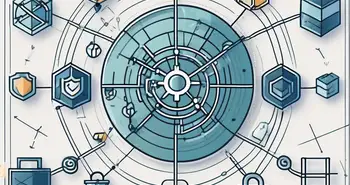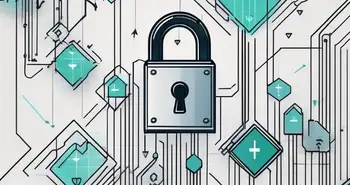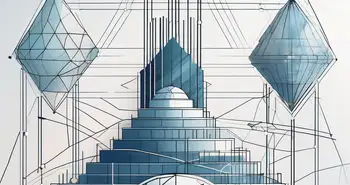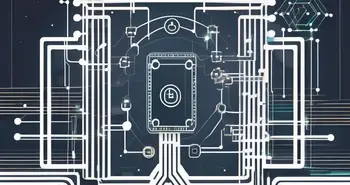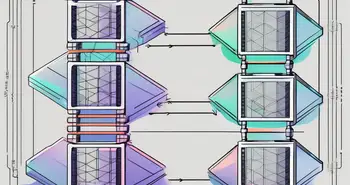Understanding the Advantages of Layer 1 Blockchain Technology
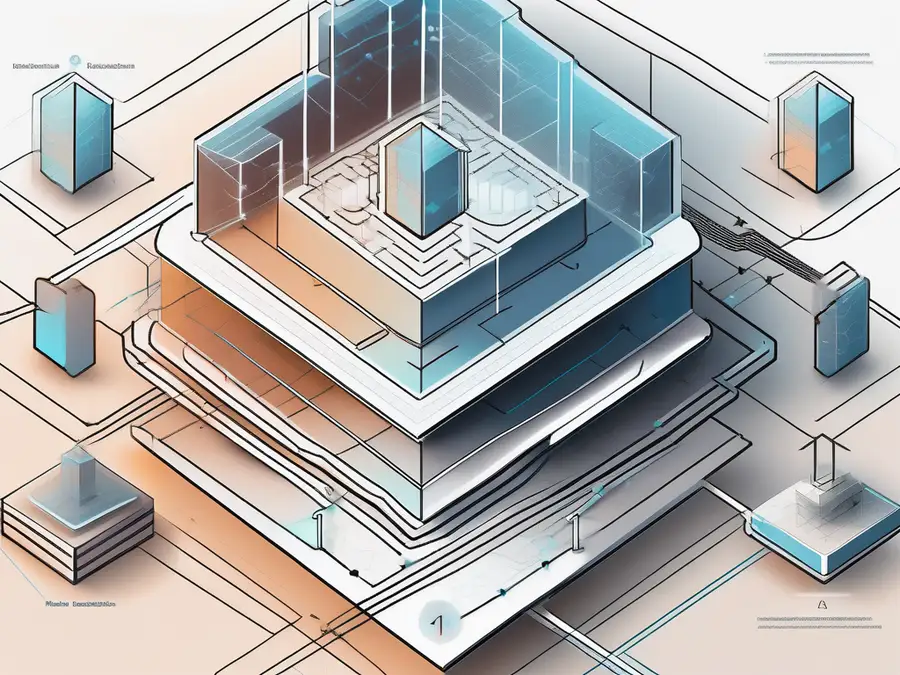
Blockchain technology has revolutionized various industries, and one of its most groundbreaking aspects is Layer 1 blockchain. In this article, I will delve into the concept of Layer 1 blockchain and explore its core advantages, its key differences from Layer 2 blockchain, its role in different industries, future prospects, and potential challenges.
Defining Layer 1 Blockchain Technology
Before delving into the advantages, let's first understand what Layer 1 blockchain technology is. At its core, blockchain is a decentralized and transparent digital ledger that records transactions. Layer 1 blockchain refers to the foundational layer of the technology stack, where transactions are directly recorded on the blockchain itself.
The Basics of Blockchain
Blockchain operates on the principle of distributed consensus, where multiple participants in a network validate and agree on the state of the ledger. Each transaction is encrypted, time-stamped, and linked to the previous transaction, creating an immutable chain of data blocks. This ensures transparency, security, and resistance to fraud.
What is Layer 1 Blockchain?
Layer 1 blockchain takes the basic principles of blockchain technology and enhances them further. It is the underlying layer responsible for transaction validation, consensus mechanisms, and the overall security and governance of the blockchain network. Layer 1 blockchains are often public and permissionless, allowing anyone to join the network and participate in transaction validation.
Layer 1 blockchain technology is designed to provide a solid foundation for the entire blockchain ecosystem. It focuses on the core functionalities of blockchain, such as transaction processing, data storage, and security. By operating at the base layer, Layer 1 blockchains ensure that the fundamental aspects of blockchain technology are robust and reliable.
One of the key advantages of Layer 1 blockchain is its ability to achieve high levels of decentralization. With a public and permissionless network, Layer 1 blockchains allow anyone to become a participant and contribute to the validation of transactions. This decentralized nature ensures that no single entity has control over the network, making it resistant to censorship and manipulation.
In addition to decentralization, Layer 1 blockchain technology also focuses on scalability. As the number of transactions on a blockchain network increases, scalability becomes crucial to maintain efficiency. Layer 1 blockchains employ various techniques, such as sharding and consensus algorithms, to ensure that the network can handle a large volume of transactions without compromising its performance.
Furthermore, Layer 1 blockchains prioritize security and immutability. By recording transactions directly on the blockchain, Layer 1 ensures that the data is tamper-proof and cannot be altered or deleted without consensus from the network participants. This level of security is essential for applications that require trust and transparency, such as financial systems and supply chain management.
Overall, Layer 1 blockchain technology forms the foundation of the blockchain ecosystem. It provides the necessary infrastructure for secure, transparent, and decentralized transactions. By focusing on core functionalities and scalability, Layer 1 blockchains pave the way for the development of innovative applications and the widespread adoption of blockchain technology.
The Core Advantages of Layer 1 Blockchain
Enhanced Security Features
One of the key advantages of Layer 1 blockchain is its enhanced security features. By recording transactions directly on the blockchain, Layer 1 eliminates the need for intermediaries, reducing the risk of data manipulation or unauthorized access. The decentralized nature of Layer 1 blockchain also ensures that no single entity can control the network, making it highly resistant to hacking or malicious activities.
Scalability and Performance
Layer 1 blockchain solutions are designed to handle a larger volume of transactions compared to their Layer 2 counterparts. With Layer 1, transactions are processed directly on the blockchain, resulting in faster confirmation times and increased scalability. As a result, Layer 1 blockchain networks are better equipped to handle complex transactions at a global scale, making them suitable for applications that require high throughput and performance.
Decentralization and Transparency
Layer 1 blockchain technology embodies the core principles of decentralization and transparency. With no central authority controlling the network, Layer 1 blockchains empower individuals and organizations to participate in transaction validation and decision-making processes. This fosters trust and eliminates the need for intermediaries, bringing transparency to industries that have historically lacked it.
Layer 1 vs Layer 2 Blockchain: A Comparative Analysis
Understanding Layer 2 Blockchain
Layer 2 blockchain refers to protocols or networks built on top of existing Layer 1 blockchains. These layer 2 solutions aim to enhance scalability and improve transaction processing speed by offloading some of the workload from the Layer 1 blockchain.
Key Differences and Similarities
While Layer 1 and Layer 2 blockchain technologies share some similarities, such as their foundation on the principles of blockchain, they differ in their approach to transaction validation and scalability. Layer 1 blockchains process transactions directly on the blockchain, whereas Layer 2 solutions process transactions off-chain and settle them on the Layer 1 blockchain periodically.
Layer 1 blockchain excels in terms of security, scalability, and decentralization, making it ideal for applications that require these features. On the other hand, Layer 2 blockchain solutions offer faster transaction processing and lower fees, making them suitable for applications that prioritize speed and cost efficiency.
The Role of Layer 1 Blockchain in Different Industries
Finance and Banking
Layer 1 blockchain has the potential to revolutionize the finance and banking industry by providing secure, transparent, and efficient solutions for transactions, identity verification, and smart contracts. With decentralized finance (DeFi) gaining popularity, Layer 1 blockchain can enable individuals to access and manage financial services without intermediaries, bringing financial inclusion to the masses.
Supply Chain Management
Layer 1 blockchain technology can transform supply chain management by providing end-to-end visibility and traceability. By recording every transaction on the blockchain, Layer 1 enables stakeholders to track and verify the origin, authenticity, and movement of goods. This enhances transparency, reduces fraud, and improves efficiency in supply chain processes.
Healthcare
In the healthcare industry, Layer 1 blockchain technology can revolutionize data sharing and patient care. With Layer 1 blockchain, patients can have greater control over their health information, ensuring privacy and security while enabling seamless sharing of critical medical data among healthcare providers. This can lead to better diagnoses, personalized treatments, and improved patient outcomes.
Future Prospects of Layer 1 Blockchain Technology
Emerging Trends
Layer 1 blockchain technology is constantly evolving, and several emerging trends are shaping its future. One such trend is the integration of layer 1 blockchains with other emerging technologies such as artificial intelligence (AI) and the Internet of Things (IoT). This integration can unlock new possibilities, enabling autonomous smart contracts, secure IoT ecosystems, and AI-driven decision-making on the blockchain.
Potential Challenges and Solutions
While Layer 1 blockchain technology holds immense potential, it also faces challenges that need careful consideration. Scalability, energy consumption, and regulatory frameworks are some of the key challenges. However, these challenges are being addressed through ongoing research and development, with solutions such as sharding, layer 1 interoperability, and more sustainable consensus mechanisms being explored.
As an expert in the field, I have witnessed the transformative power of Layer 1 blockchain technology firsthand. Its robust security, scalability, and transparency make it a game-changer in various industries. My personal advice to businesses and individuals is to embrace this technology and explore its potential to drive innovation and efficiency.
FAQ
What is Layer 1 blockchain?
Layer 1 blockchain refers to the foundational layer of the blockchain technology stack. It directly records transactions on the blockchain, ensuring enhanced security, scalability, and decentralization.
How does Layer 1 differ from Layer 2 blockchain?
Layer 1 blockchain processes transactions directly on the blockchain, while Layer 2 blockchain offloads some of the transaction processing to a layer built on top of Layer 1. Layer 1 excels in security and scalability, while Layer 2 offers faster transaction processing and lower fees.
What are the advantages of Layer 1 blockchain technology?
Layer 1 blockchain technology offers enhanced security features, scalability and performance, and fosters decentralization and transparency. It has the potential to revolutionize industries such as finance, supply chain management, and healthcare.
What are the future prospects of Layer 1 blockchain technology?
The future of Layer 1 blockchain technology looks promising, with emerging trends including integration with AI and IoT. However, challenges such as scalability and energy consumption need to be addressed through ongoing research and development.
What is your expert advice on embracing Layer 1 blockchain technology?
As an expert in the field, my advice is to embrace Layer 1 blockchain technology and explore its potential in driving innovation and efficiency. Its robust security, scalability, and transparency make it a game-changer in various industries.
As you consider the transformative potential of Layer 1 blockchain technology, take the next step with Morpher. Embrace the future of trading on a platform that harnesses the power of blockchain to offer zero fees, infinite liquidity, and a truly unique trading experience. Whether you're interested in stocks, cryptocurrencies, or even niche markets, Morpher provides the tools for fractional investing, short selling, and up to 10x leverage to enhance your investment strategy. Prioritize your safety with a non-custodial Morpher Wallet and gain control over your trading journey. Sign Up and Get Your Free Sign Up Bonus today to start trading the Morpher way – where innovation meets investing.

Disclaimer: All investments involve risk, and the past performance of a security, industry, sector, market, financial product, trading strategy, or individual’s trading does not guarantee future results or returns. Investors are fully responsible for any investment decisions they make. Such decisions should be based solely on an evaluation of their financial circumstances, investment objectives, risk tolerance, and liquidity needs. This post does not constitute investment advice.

Painless trading for everyone
Hundreds of markets all in one place - Apple, Bitcoin, Gold, Watches, NFTs, Sneakers and so much more.

Painless trading for everyone
Hundreds of markets all in one place - Apple, Bitcoin, Gold, Watches, NFTs, Sneakers and so much more.

